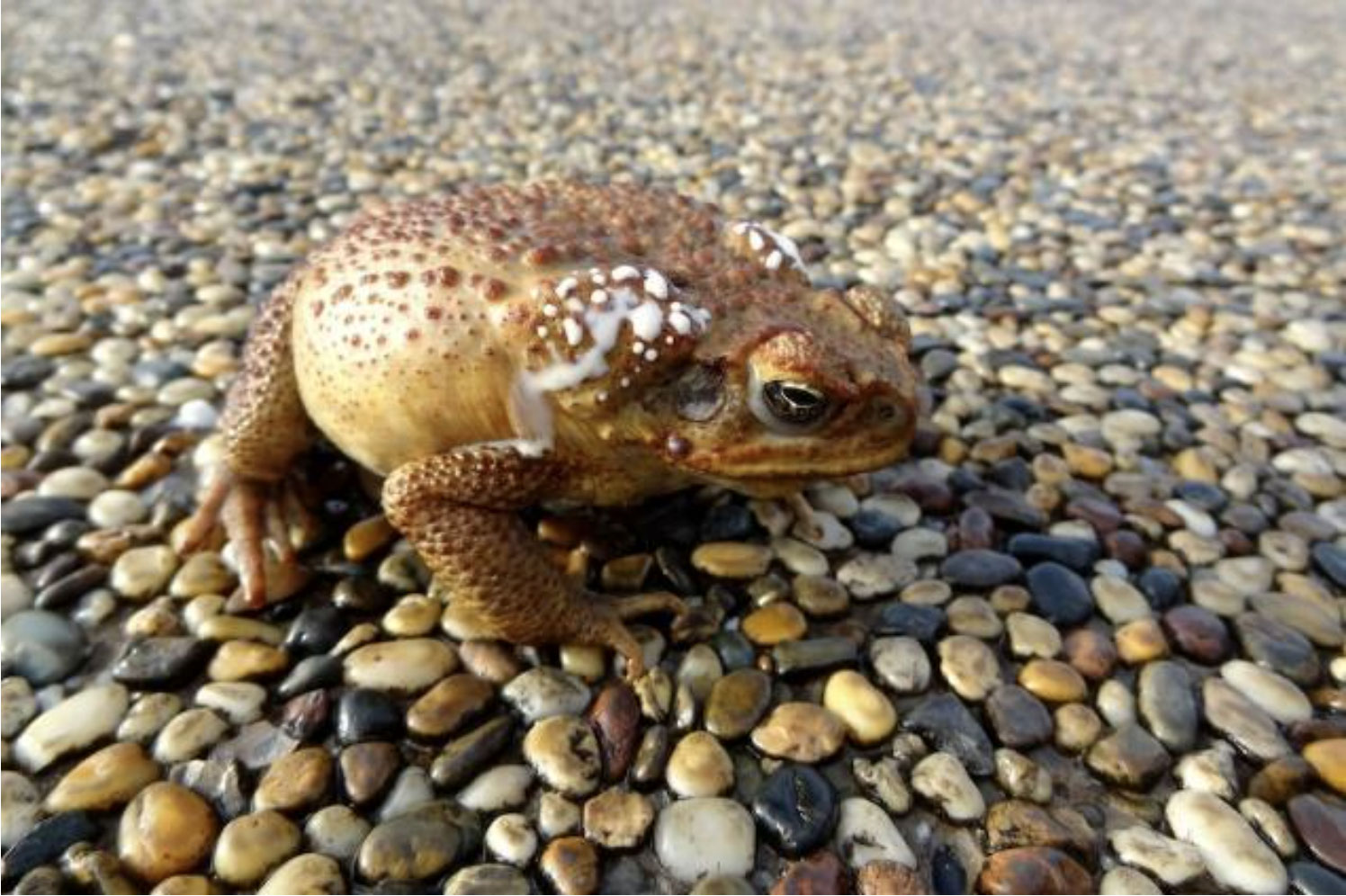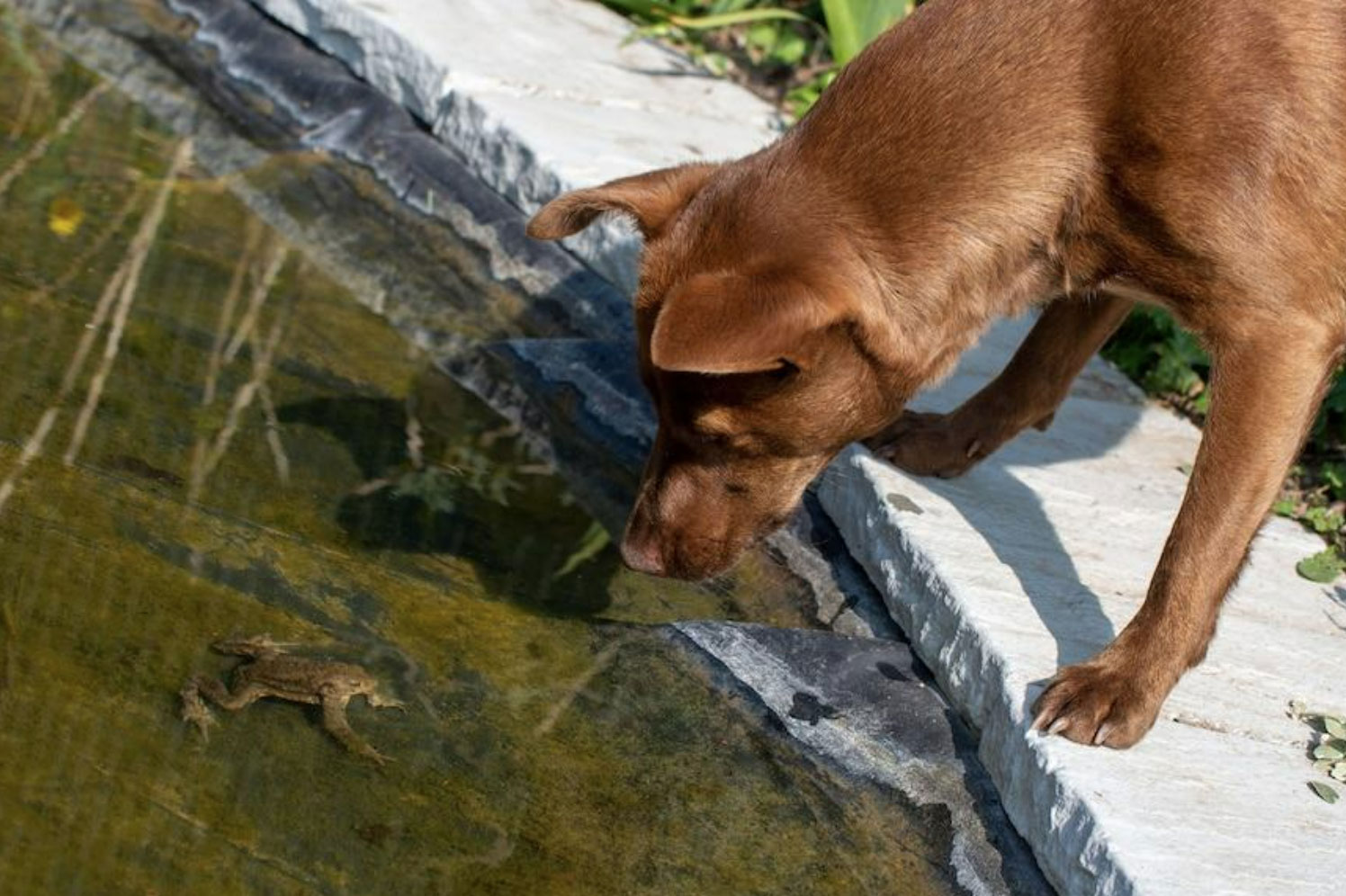
Cane Toads and Your Pets
The lack of natural predators in Australia, their ability to breed easily and abundance of food has allowed them to thrive, with population numbers well into the millions. They are considered a pest and pose a threat to Native wildlife populations. Today, cane toads can be found throughout Queensland and into coastal New South Wales, the top end of the Northern Territory, and the Kimberley region of Western Australia. It is estimated they are moving westward at 40-60km per year. They are most active in warmer months.

For our pets, especially dogs, cane toads can be inviting to hunt. Dogs like to ferret them out of hiding places and a jumping toad makes for an appealing target.
At all stages of their lifecycle cane toads are poisonous. From eggs to tadpoles to adults, and even dead dried cane toads, the ingestion of their toxin can be fatal, or at least cause serious symptoms. Their toxins break down extremely slowly, and only once they are completely decomposed are they safe.
Poisoning
Poisoning occurs when a dog comes in contact with a cane toad through ‘mouthing’, biting, or licking. When a cane toad is attacked or threatened, they release a potent and fast-acting toxin, milky white in colour, from their parotid glands. This toxin is also in their body tissue, and they can squirt the poison up to two metres.
The toxin elicits its effects when it is absorbed via the mucous membranes, most commonly the gums but also via the eyes, nose, and tongue. It is very rarely ingested. For example, if a cane toad is ‘mouthed’ the toxin will stick to the tongue and gums your pet, which rapidly absorbs across the mucous membranes and into the bloodstream where it targets the heart, gastrointestinal tract, and nervous system.
Symptoms
Symptoms of cane toad poisoning are dependent on the amount of toxin absorbed and the length of time from when your pet was exposed to the toxin. The cane toad venom contains three different toxin forms which target the cardiac and nervous system. If only a small dose is absorbed the symptoms your pet is likely to experience is similar to those of a psychedelic drug and is unlikely to be fatal. In larger doses, however, dogs and cats will experience a range of more severe symptoms, and in extreme cases can lead to death if not treated quickly.
Unfortunately, many of these signs and symptoms of toad toxicity are very similar to symptoms of other types of poisonings. Unless you saw your dog bit or lick a cane toad, or saw a toad near your pet, you and your vet will need to work together to diagnose the problem.
These signs and symptoms can include:
- Drooling or foaming at the mouth
- Red and slimy gums
- Pawing at mouth
- Vomiting
- Disorientation
- Dilated pupils
- Increased heart rate
- Panting or difficulty breathing
- Wobbly gait or loss of coordination
- Muscle twitches and tremors
- Part of body (legs) or whole-body going rigid
- Seizures
- High body temperature
- Death
Two other symptoms which uniquely may occur in cats with cane toad toxin are:
- Weakness of limbs
- A fixed trance-like stare
Generally speaking, the adult cane toad has enough toxin to kill an average-sized dog in 15 minutes. The smaller the dog, or cat, the more seriously affected they will be. If your dog does encounter the toxin, early intervention is crucial for recovery.
How do I treat cane toad poisoning in my dog?
If you believe your pet has encountered a cane toad and is showing any of the above signs or symptoms, follow these steps:
- Using a damp cloth, wipe the inside of their mouth until the slimy coating has been removed – usually this takes 10 to 20 minutes.
- Never use a hose to flush the toxin from their mouth – as this can make them inhale the water causing life-threatening pneumonia.
- Take them to the vet immediately!

How to prevent your dog coming into contact with cane toads
- Dogs can ingest the toxin just from eating food or drinking water a toad has come in contact with.
- Use a raised water bowl and change the water frequently.Keep your pets inside at night, or in a section of your yard which is easy to keep free of cane toads.
- Take them out for toilet breaks on a lead with a flashlight to ensure they are safe.
- Teach your dog to stay away from cane toads, while effective for some dogs it isn’t for others.
- Be vigilant during the wetter seasons of the year, as this is when toads are most active.
- Cane toads eat anything, including pet food, so we recommend not keeping partially full food bowls outside.
- Cover swimming pools
- Turn off as many outside lights as possible.
- Place a mesh screen around the outside of your fence. Bury the screen by at least 10cm and extend it by at least 50cm.
- Try and trap toads with funnel traps along your fence.
How to humanely euthanise a cane toad
As the cane toad is considered a pest and is a serious threat to our ecosystem, wildlife and pets, the RSPCA recommends humanely euthanising once the possibility of being a native frog has been ruled out. There are two methods for euthanising cane toads RSPCA recommends:
- Eugenol
The chemical Eugenol, found in the product Croaked, when applied directly to cane toads kills them safely, quickly, and humanly. - Stepped Hypothermia
This is the process of placing the cane toad into a refrigerator for a period of time before moving it into a freezer, which will effectively kill the cane toad painlessly.
For full instructions on how to humanely euthanise a cane toad, please download RSPCAs fact sheet.




